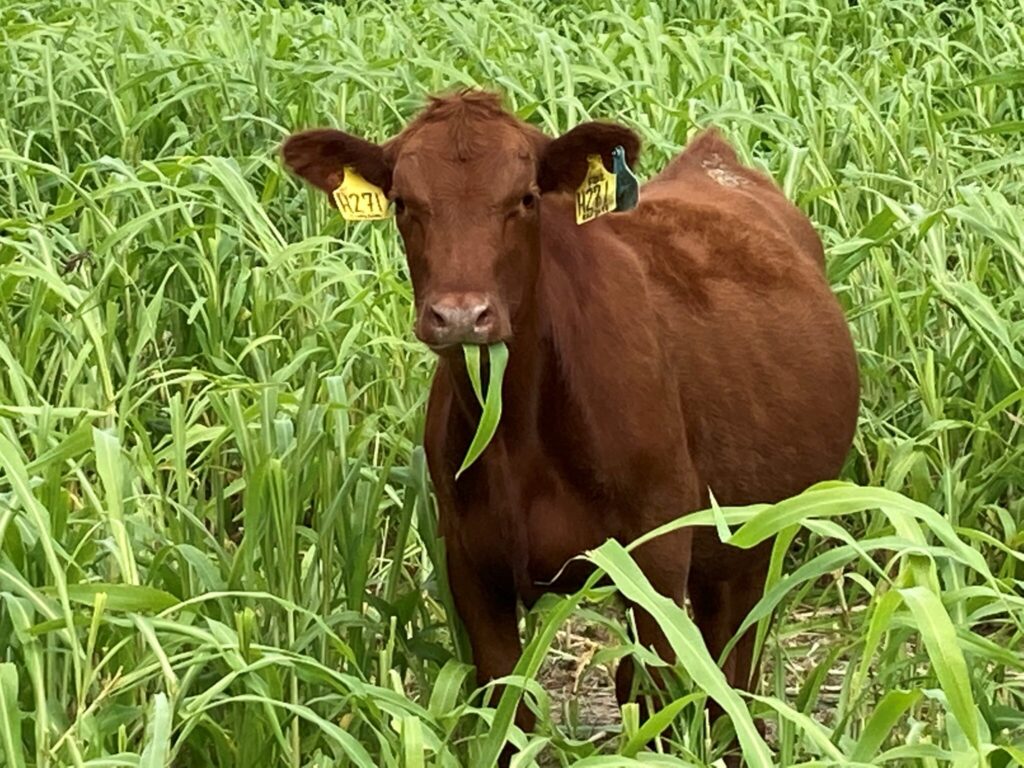Diverse types of sorghum provide many opportunities for use as a valuable forage resource. Sudangrass and sorghum x sudangrass provide valuable grazing opportunities in the summer months; they can also be ensiled as traditional chopped silage and baleage. Forage sorghum is a good alternative to corn silage, particularly on droughty soils and where the tar spot fungus has been problematic on corn.
A news release regarding the forage sorghum field day to be held on September 10 was prepared by Ashvini Malshe with Purdue Agricultural Communications follows. Please share the opportunity with others about the field day.
WEST LAFAYETTE, Ind. – Purdue University Extension will host a Forage Sorghum Field Day on September 10 at the Feldun-Purdue Ag Center (FPAC) in Bedford, Indiana.
“Compared to corn, forage sorghum has attributes of being more drought tolerant, has less nitrogen requirements and no host relationship with the tar spot pathogen,” said Keith Johnson, Purdue professor of agronomy. “We will discuss its production and utilization for silage, grazing and as a standing winter feed source in a winter lot.”
Attendees will also have the opportunity to learn about forage sorghum research from agronomy experts including Mitch Tuinstra, Wickersham Chair of Excellence in Agricultural Research and scientific director of the Institute for Plant Sciences at Purdue. He will share about plant breeding techniques that improve sorghum yield and quality.
Other speakers will include Brad Shelton, FPAC superintendent; Jason Tower, Southern Indiana Purdue Agricultural Center superintendent; Nick Minton, Purdue Extension beef systems specialist; and Jeff Jackson, Croplan alfalfa and forage specialist.
Venue tours will be available during the event, in the afternoon from 3:00 to 5:00 p.m. and in the evening from 6:00 to 8:00 p.m. Dinner and a bull test station tour will be available from 5:00 to 6:00 p.m.
Participants should register by September 5. Contact Brad Shelton, FPAC superintendent, at sheltonb@purdue.edu. For questions or accessibility needs, contact Johnson at johnsonk@purdue.edu.
Writer/Media Contact: Ashvini Malshe, 765-496-7480, malshea@purdue.edu

Sorghum has much value as a grazing and silage resource for ruminant livestock producers.
Photo source – Keith Johnson, Purdue Extension Forage Specialist



